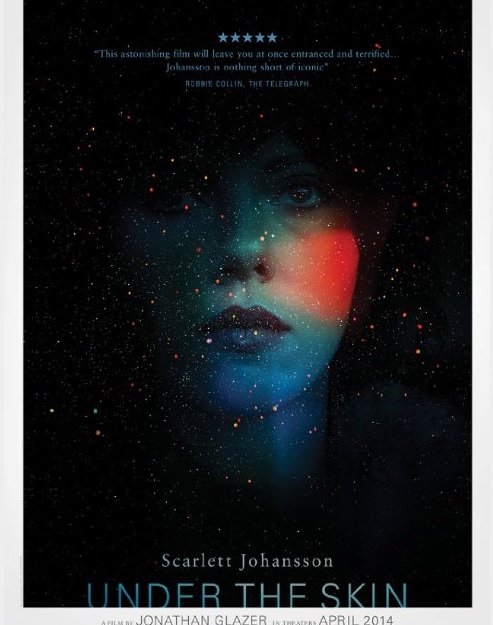INHALE is a cultural platform where artists are presented, where great projects are given credit and readers find inspiration. Think about Inhale as if it were a map: we can help you discover which are the must-see events all over the world, what is happening now in the artistic and cultural world as well as guide you through the latest designers’ products. Inhale interconnects domains that you are interested in, so that you will know all the events, places, galleries, studios that are a must-see. We have a 360 degree overview on art and culture and a passion to share.

In early 2001, Jonathan Glazer began planning his next film. The director was then 35, a wildly sought-after maker of music videos and adverts who had just released his first film, the singular gangster movie Sexy Beast. His next was to be an adaptation of Michel Faber’s cult novel Under the Skin. The project ended up on ice. Work didn’t start until 2004.
Ten years later, Under the Skin is finished, and Glazer is in a publicists’ office in Soho, a well-preserved Londoner with a thicket of dark hair, tall enough to verge on the looming. Having spent almost all his 40s getting the film made, he must feel like a different man from the one who began it?
“Well. Hmm. I … God. That’s a teaser.” He stalls. “I want to be honest. It’s just hard to articulate. I need to scratch my chin about that one. Can we pick it up later?”
He clearly finds interviews akin to visiting the dentist. “But I want to stand behind the film,” he says. The thing is, Under the Skin does invite you to ponder its creator. It concerns an alien in Glasgow, preying – obliquely but chillingly – on single men. They co-operate because the alien is played by Scarlett Johansson, who is still Johansson even in a mangy fur coat and wig. There is footage from cameras hidden in the van in which she tirelessly cruises; elsewhere, visions of her black, amniotic alien realm. Many will loathe it – the premiere at the Venice film festival was met with boos. It will also blow minds, its punk experimentalism and raw sensuality making pretty much everything else seem hopelessly quaint. Masterpiece is the word.
This bold, flawed and admirably out-there adaptation of Michel Faber’s 2000 novel about an extraterrestrial stalker opens with a pinpoint of light that may be a distant twinkling star or an approaching headlight – it’s impossible to tell. From here we move, via kaleidoscopic invention, to an image of an eye; a constructed gaze, human on the outside, alien on the inside – inner space from outer space. With a brilliant blend of abstraction and precision, this sequence establishes a tension between the intergalactic and the earthly that underwrites the subsequent narrative; an eerie tale of a space traveller inhabiting human form, prowling the streets of Glasgow in search of raw flesh.
With such jarring elements clashing on screen, it’s perhaps unsurprising that Under the Skin has provoked both forceful boos and cheers, the heated antipathy of some viewers and critics apparently spurring the passionate devotion of others. Yet this is neither a misunderstood masterpiece nor a wanton misstep – rather it is a striking attempt to tell an exotic story in a down-to-earth environment that deserves praise for its singularity of vision, even as it runs the risk of ridicule. Glazer has joked that in an ideal world he’d make films that would only ever be viewed by a handful of close friends, and it’s to his credit that Under the Skin doesn’t make compromises to court a wider audience. On the contrary, it is the work of someone who is aiming for the heavens, but is unafraid to fall to Earth.

Ray Winstone as Gal, the retired crook on the Costa Brava, in Jonathan Glazer’s 2000 film Sexy Beast.
-info and visuals via The Guardian and IMDB






























































